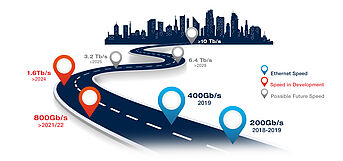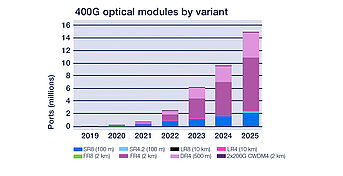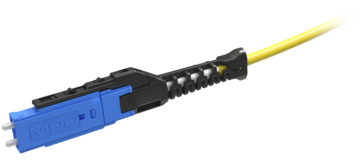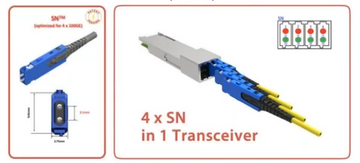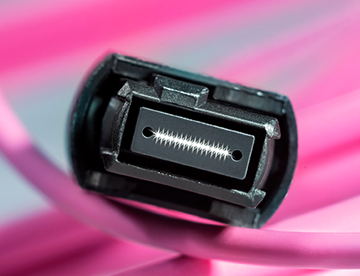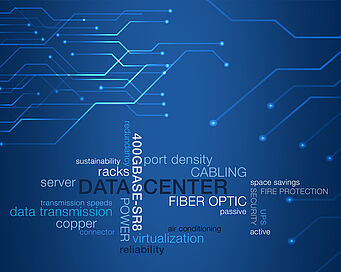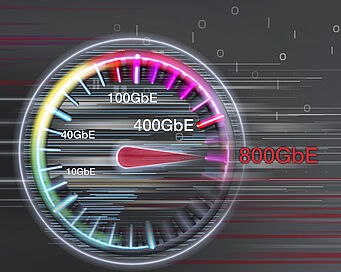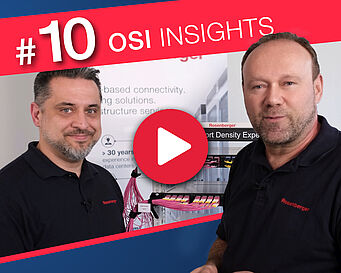Choosing the right datacenter cabling
No one today will be surprised to hear that data volumes are increasing all around the world. Data is coming into the focus of attention in every sector worldwide and is becoming more important than ever due to increasing levels of digitalization. Thus, according to Statista, the annual digital data volume in 2025 will amount to 175 zettabytes. At the same time, because the data is processed and exchanged centrally in datacenters, the need for capacity in these facilities is also increasing.
Ethernet Roadmap: 400 Gigabit and 800 Gigabit applications
In order to achieve the highest possible data rates, many datacenter operators are already using 400 Gigabit Ethernet networks. These are the focus of the current blog article At the same time, developments are already moving in the direction of even faster, optical data transmission solutions. The OSFP MSA is dedicating considerable effort to further developing the OSFP transceiver for 800 Gigabit applications such as 800G-DR8. In this solution, the 800 GBit/s data transfer is performed over eight parallel full-duplex 100-Gbit transmission channels (lanes) with PAM4 coding (8x100G=800G) and two possible reaches: one up to 2km and the other up to 10km. The following connector faces are possible: Singlemode MPO/MTP® 16 APC 8°, Singlemode MDC or Singlemode SN PC 0°.
